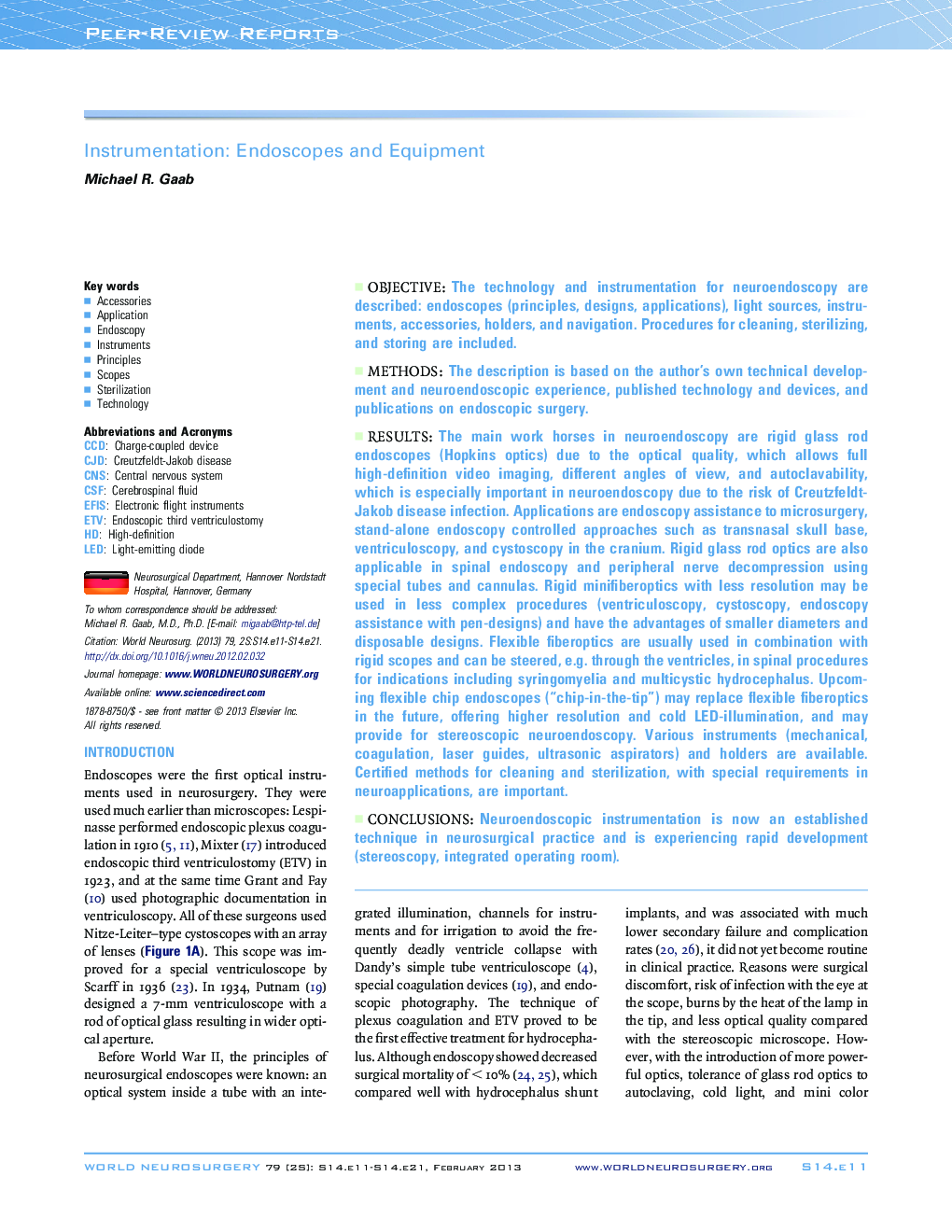| کد مقاله | کد نشریه | سال انتشار | مقاله انگلیسی | نسخه تمام متن |
|---|---|---|---|---|
| 3096815 | 1190933 | 2013 | 8 صفحه PDF | دانلود رایگان |

ObjectiveThe technology and instrumentation for neuroendoscopy are described: endoscopes (principles, designs, applications), light sources, instruments, accessories, holders, and navigation. Procedures for cleaning, sterilizing, and storing are included.MethodsThe description is based on the author’s own technical development and neuroendoscopic experience, published technology and devices, and publications on endoscopic surgery.ResultsThe main work horses in neuroendoscopy are rigid glass rod endoscopes (Hopkins optics) due to the optical quality, which allows full high-definition video imaging, different angles of view, and autoclavability, which is especially important in neuroendoscopy due to the risk of Creutzfeldt-Jakob disease infection. Applications are endoscopy assistance to microsurgery, stand-alone endoscopy controlled approaches such as transnasal skull base, ventriculoscopy, and cystoscopy in the cranium. Rigid glass rod optics are also applicable in spinal endoscopy and peripheral nerve decompression using special tubes and cannulas. Rigid minifiberoptics with less resolution may be used in less complex procedures (ventriculoscopy, cystoscopy, endoscopy assistance with pen-designs) and have the advantages of smaller diameters and disposable designs. Flexible fiberoptics are usually used in combination with rigid scopes and can be steered, e.g. through the ventricles, in spinal procedures for indications including syringomyelia and multicystic hydrocephalus. Upcoming flexible chip endoscopes (“chip-in-the-tip”) may replace flexible fiberoptics in the future, offering higher resolution and cold LED-illumination, and may provide for stereoscopic neuroendoscopy. Various instruments (mechanical, coagulation, laser guides, ultrasonic aspirators) and holders are available. Certified methods for cleaning and sterilization, with special requirements in neuroapplications, are important.ConclusionsNeuroendoscopic instrumentation is now an established technique in neurosurgical practice and is experiencing rapid development (stereoscopy, integrated operating room).
Journal: World Neurosurgery - Volume 79, Issue 2, Supplement, February 2013, Pages S14.e11–S14.e21